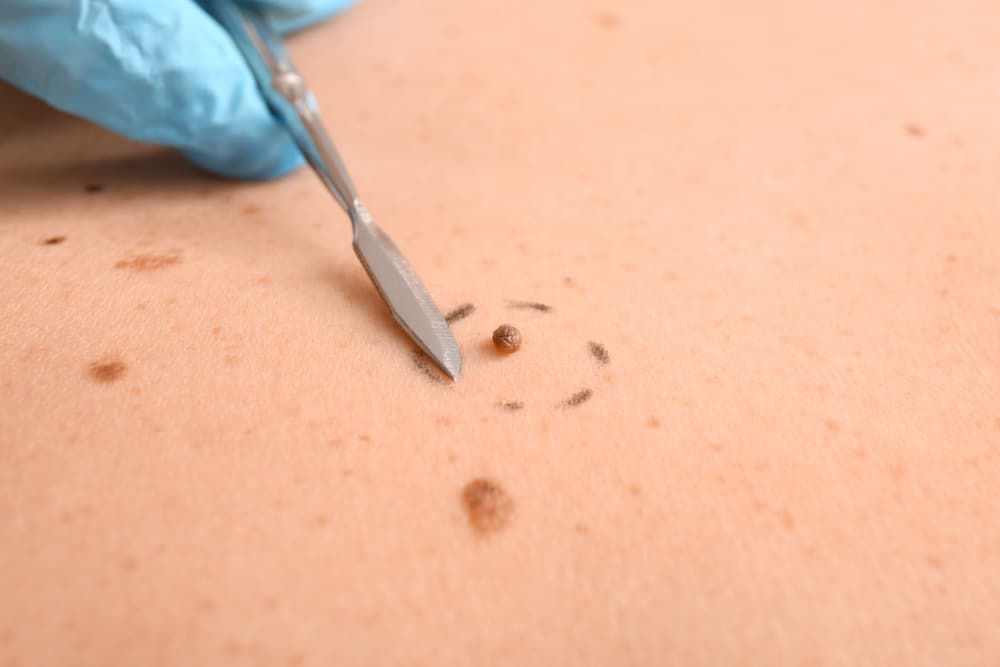Many people have moles on numerous parts of their bodies. But they are usually harmless, and you don’t need to get them removed.
Yet, sometimes moles are permanently removed by your health provider if they are cancerous or suspicious. You also want to get a mole removed because it looks unsightly.
No matter the reason, a mole can be permanently removed using several methods. This article will teach you about mole removal, its processes, and more.
What is a Mole?
Melanocytes are the cells responsible for producing a pigment called melanin for skin pigmentation. When clusters of melanocytes come together, it is known as a mole.
A mole is a round, pigmented spot that can occur anywhere on the body. It can be raised or flat, small or large, and can be of pink, red, brown, or black colour. The scientific term for a mole is ‘nevus’ (plural: nevi).
When it comes to moles, heredity plays a vital role in determining the occurrence of moles on an individual’s body. Thus, moles usually develop in early childhood. However, adults can also develop moles.
Permanent Mole Removal
Permanent mole removal is possible but should not be confused with mole biopsy.
A mole biopsy is helpful to check the mole for skin cancer or several other skin diseases. On the other hand, mole removal is a process in which a mole is completely removed from the skin in such a way that it results in smooth, blemish-free skin.
A health provider or dermatologist can use different techniques to safely and effectively remove moles from any part of a patient’s body. In this process, local anesthesia is used, which makes the process painless with little to no downtime.
Only an experienced skin specialist or dermatologist should remove a mole, who chooses a suitable mole removal method after the examination.
Methods to Remove Moles
Your dermatologist will remove the mole in a single office visit. However, sometimes you must have a follow-up visit. The following are some methods to remove moles:
- Excision: In this method, your dermatologist will penetrate the mole and goes deeper to excise the entire mole from the skin. Stitches follow it. The specialist uses this process if the mole is cancerous.
- Shaving: Unlike excision, shaving does not involve deep penetration. The mole is only removed from the skin surface using a surgical blade.
- Freezing: In the third-mole removal method, a small amount of liquid nitrogen is applied directly onto the mole, and the mole falls off after freezing.
- Burning: The dermatologist uses an electric current to burn off the mole. This process may take several sessions to remove the mole from the skin surface altogether.
Methods like freezing and burning are excellent for non-cancerous moles.
What Happens After Mole Removal?
After removing the mole successfully, your dermatologist might examine the skin for symptoms of skin cancer. While skin cancer usually does not arise from mole removal, it’s better to be on the safe side. Remember that your health insurance may not cover non-cancerous mole removal as it comes under cosmetic procedures.
Also, never try to remove moles by yourself using sharp objects. It can lead to more significant problems since some moles are cancerous. So, it’s best to let a good dermatologist do this job.
Mole Removal in Melbourne
At Lotus Medical Centre, we offer a range of medical services, including permanent mole removal in the broader Brunswick community in Melbourne. If you don’t appreciate the appearance of the mole or if it’s cancerous, we have the right experts to get the mole removed safely and effectively.
Call us and book your appointment today!

